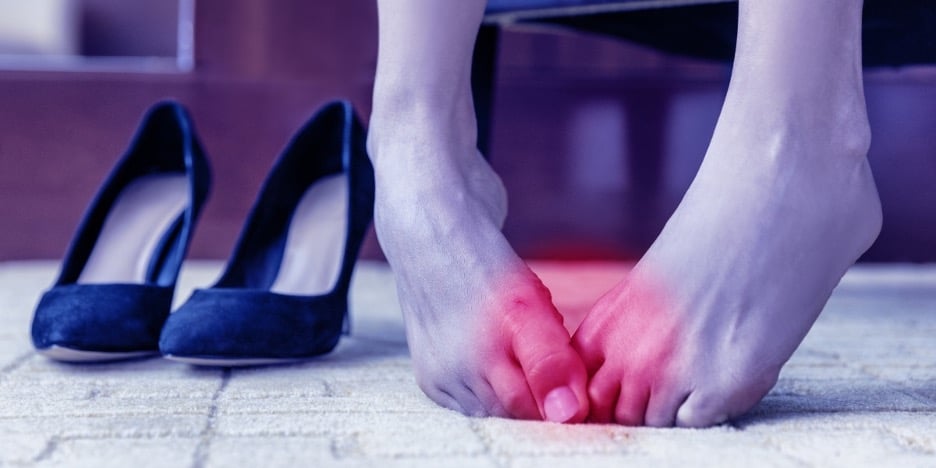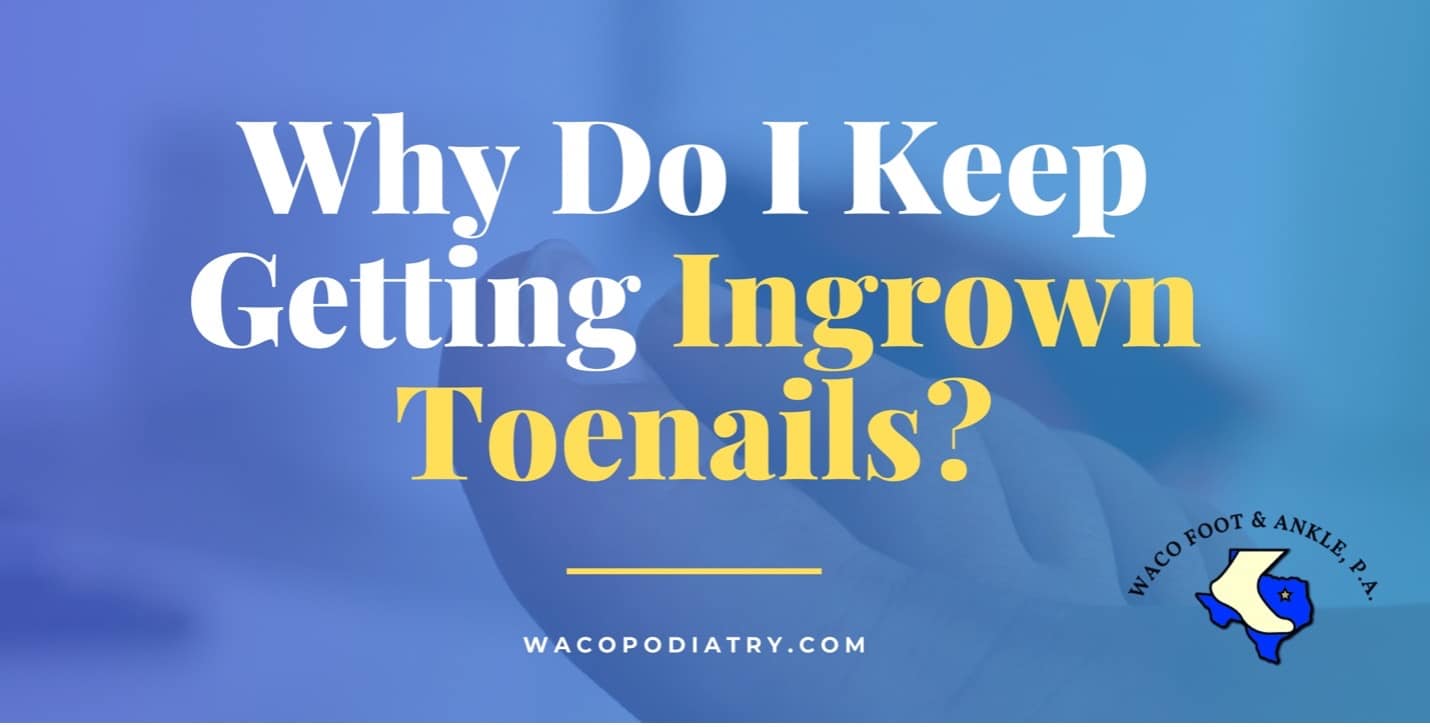Why Do I Keep Getting Ingrown Toenails?
Our feet often take most of the day’s hard work. Whether you’re on your feet at work, walking, hiking, running, or just out and about, they need care and attention just like the rest of our bodies. Having foot pain at the end of a long day can seem like a normal thing, but it’s possible you are not taking proper care of your feet. When you don’t take good care of your feet, you give ingrown toenails a chance to occur and make your foot discomfort significantly worse. Fortunately, most ingrown toenails can be prevented with a little attention and good foot care.

What are Ingrown Toenails
Ingrown toenails may seem like a unique problem, but they are quite common. An ingrown toenail is easy to spot because the corner or side of a toenail begins to grow into soft flesh. The most common toe to suffer from an ingrown nail is the big toe, because of its placement on the foot and pressure points when wearing shoes.
What are the Symptoms?
While you may be able to see an ingrown nail, we may sometimes not notice it, so your body has several physical symptoms that will alert you to a problem. Early-stage symptoms of ingrown toenails include:
- Pain and tenderness in your toe along the nail.
- The skin around the toe becomes tender, swollen, or hard.
- The skin around the toe is inflamed.
- Redness around the toenail.
Infection symptoms can include:
- Red, swollen skin
- Pain
- Bleeding
- Oozing pus
- Overgrowth of the skin around the toe
It is extremely important to treat your ingrown toenail as soon as possible to avoid worsening symptoms. Usually, our doctors can diagnose your toe with a physical exam. If you think you have an ingrown toenail, contact us today to discuss diagnoses and treatment options.
Why Ingrown Toenails Occur and How to Prevent Them
Ingrown toenails can occur due to several reasons. Taking care of your feet can help you prevent or minimize the likelihood of getting ingrown toenails. Some of the most common reasons are:
Improperly Fitting Shoes
Ensuring that you are wearing properly fitting footwear is a great first step. A shoe should that is too tight or too big can lead to problems.
When purchasing footwear, the shoe should fit well and be comfortable in the store. You should not need to “break them in.” Be sure to walk around in them and make sure the width is good. That means the toe box isn’t too small and your toes don’t rub on the edges or top of the shoe. For length, you should have a thumb width or ½ inch of space between your longest toe and the edge of the shoe.
If your shoes have begun to show signs of wear, it’s time to get rid of them. Shoes that have lost their support are no longer serving you and can cause greater (and more costly) issues down the road. When it comes to foot care, always begin with the shoes.
Wear High Heels Sparingly
You don’t have to give up your favorite heels entirely but do try to limit the frequency and length of time you wear them. This is because heels disrupt the natural position of the foot and put pressure on different parts of the foot. If you can switch to a broader heel to give your foot more surface area to spread out.
You Are Not Cutting Your Nails Correctly
Toenails should be cut straight across, not on an angle or with rounded edges. Your toenail should not match the shape of your toe. An angled toenail can encourage the nail to grow into the skin.
Keep your toenails at a moderate length because if they are too short it can encourage nail growth into the edges of the toe. When trimming your toenails, ideally, you should be using a toenail trimmer instead of a fingernail trimmer, as toenails are much thicker and stronger than fingernails.
Soaking your nails in warm water (even after the bath or shower) can help soften the nail and make them easier to trim.
Natural Shape of Your Toenail
Some people have curvy toenails and will be prone to ingrown toenails. Following proper hygiene habits and correctly trimming the nail will help prevent ingrown toenails.
Wear Protective Footwear
If you are in an environment where there is a risk of injury to your toes, wear protective footwear like steel-toe shoes or boots. An injury to the toenails can lead to ingrown toenails. Just like regular shoes, ensure these are comfortable and fit you perfectly. Also, consider wearing moisture-wicking socks to prevent the build-up of moisture and excess sweating.
Diabetes
If you have diabetes or a condition that restricts the blood flow to your feet, this increases your risk of ingrown toenails. Regularly monitor your feet and practice good hygiene to help prevent ingrown toenails from occurring. Regular foot exams by a professional can also help maintain good foot health.

Treatment Options for Ingrown Toenails
It is important that you do not try to cut the ingrown toenail yourself, as you can cause an infection or make it worse. Our dedicated team can help you address your foot concerns. Schedule a consultation today and we’ll get you back on your feet.
In the meantime, some home treatment options can help reduce pain and discomfort.
- Soak your foot in warm water and Epsom salts for about 15-20 minutes a couple of times per day. Keep your feet dry otherwise.
- Apply a topical antibiotic to help reduce the potential for infection.
- Wear shoes that don’t restrict the feet.
- Don’t put any nail polish on your toenails.
Let Us Help with Your Ingrown Toenails!
At Waco Foot & Ankle, our amazing team of award-winning podiatrists wants to keep you pain-free. When life throws you curve balls and you have foot or ankle pain, contact us for an appointment so we have to examine the problem and get you started on treatment. We are here to help!
